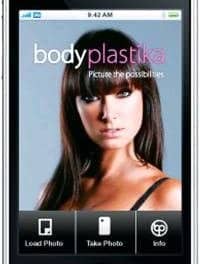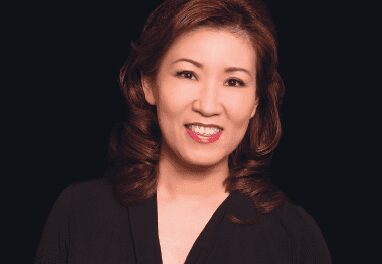 |
As medical spas, cosmetic surgeons, and aesthetic/elective medical providers wrestle over the prime consumer group for aesthetic services—namely 25- to 54-year-old women—many providers and marketers are overlooking health- and appearance-conscious males.
This is rapidly changing as more men seek elective and aesthetic medical procedures and services, ranging from laser hair removal to plastic surgery. For some procedures, such as laser vision correction, men comprise roughly 50% of all completed procedures.
Furthermore, men tend to spend more per capita or per procedure due to the fact that male aesthetic procedures tend to be more expensive. For example, laser hair removal for a man’s back is pricier than the same procedure for a woman’s legs. This means that even if men comprise only 20% to 30% of your client base, they could account for nearly 50% of your revenue.
“Men are more body-conscious than ever before, and plastic surgery has become a viable—and acceptable—option for them in our youth- and fitness-oriented culture,” says George Lefkovits, MD, FACS, a leader in male-directed aesthetics who has a practice in Manhattan.
“While studies may show that rhinoplasty is the number one procedure for men, liposuction and male breast-reduction surgery are the most requested surgeries in my practice,” he explains.
The male segment is becoming increasingly important from a multitude of perspectives. However, marketing to the male segment is somewhat different from marketing to women.
The Image-Conscious Male
Combined with their discretionary spending power and demographic shifts, men’s health is emerging as a strong segment in the multibillion-dollar aesthetic medical services industry. Important trends to consider include the following:
Metrosexual—The “metrosexual” man, a term coined by Marian Salzman in 2003, is an image-conscious urban male who is willing to spend money on his appearance and lifestyle. According to Leo Burnett Worldwide, a leading advertising agency and communications company, roughly one fifth of men can be classified as metrosexuals.
Retrosexual—On the other hand, the “retrosexual” male is one who is not really concerned about his lifestyle and appearance, and has a poor sense of style. This could be the beer-drinking, sports-watching, blue-collar guy who also represents roughly 20% of all men.
According to various research studies, nearly 80% of men don’t recognize themselves in advertisements. These include Baby Boomers aged 45 to 55; men in their 20s and 30s who care about their personal appearance but also have retrosexual habits; and male teens who are Web sophisticates who will carry these habits into their 20s and 30s.
Übersexual—Consequently, a new group has emerged called “übersexual.” They are less concerned about fashion but more into interpersonal relationships than self. This group combines masculine traits with positive traits associated with females. Roughly 73% of European and American men say that spending time in front of the mirror was either “important” or “very important” compared with 72% of women.
Other trends are very telling. According to a recent study commissioned by GQ magazine, 84% of men purchase their own clothes compared with 65% 4 years ago. Also, 52% of retailers said that their average male customer shopped at their stores at least once per month compared with only 10% in 2001.
For example, demand for male-specific cosmetics, personal care, and grooming products has outstripped the general market. This growth and demand is particularly strong among younger men. In 2006, more than $16 billion was spent on men’s personal care, grooming, cosmetics, and toiletries. According to Datamonitor, more than 600 men’s-only grooming and personal care products were launched, up from 459 products 4 years ago.
The Spa Connection
Men’s grooming has gone far beyond the soap, shaving lotion, aftershave gels, and the occasional splash of cologne. Products now include function-specific body lotions, bronzers, SPF facial moisturizers, anti-aging serums, vitamin-enriched hair products, revitalizing eye treatments, and male cosmetics.
The spa industry is showing similar trends. According to the International Spa Association’s 2006 Consumer Trends Report, 31% of spa-goers are men, compared with 24% 4 years ago. According to New York City-based Nickel, a pioneer of the “male-only spa” the men’s industry has gone up from 10% of the total market to 25% of spa revenues globally.
The average male spa client is a college graduate; is married, 35 to 54 years old; earns between $75,000 and $149,000 per year; and has used spas for 3 to 8 years. In addition, he has visited a day spa two to three times within the last 12 months, where the most common treatment availed was a massage.
Aesthetic Surgery
According to the American Society of Plastic Surgeons, the number of men seeking aesthetic medical procedures increased by nearly 50% over the past 5 years. Nationwide, more than 1 million men had aesthetic surgery, a double-digit increase from more than a year ago.
More than 20% of all aesthetic surgery patients are now male, which is much higher than the 10% figure of many years ago. Furthermore, nearly 60% of men approve of aesthetic surgery—a 40% increase.
The most common aesthetic surgical procedures among men (in order of popularity) include rhinoplasty, hair transplantation, liposuction, eyelid surgery, and breast reduction.
Nearly 80% of men said that they would not be embarrassed if others found out they had aesthetic surgery. Eighty-four percent of men believed that physical attractiveness contributed to success and power on the job. In addition, 42% believed that improving one thing about their face would help improve their career, and nearly one third agreed that a more youthful appearance would positively impact job success.
Whereas women have embraced aesthetic surgery and noninvasive procedures, men have been reluctant participants in undergoing such procedures for several reasons, including fear, safety, risk, ignorance, vanity, and other factors. This is changing as appearance, good health, and image have come to the forefront for men—they now consider aesthetic medical procedures and services as options to help them look and feel good.
The most common noninvasive procedures favored by men include botulinum toxin Type A, peels, facial resurfacing, microdermabrasion, and laser hair removal. Growing in popularity is Reliant’s FDA-approved Fraxel re:store laser system, which offers treatment for the entire body and is suitable for use on all skin colors. It treats conditions such as acne scarring, fine lines, pigment and tone inconsistencies, and texture in less time than the average laser.
Sexual Health
Erectile dysfunction (ED) is the most common sexual disorder among men. One out of 10 men suffer from ED, and this factor increases with age. For instance, nearly 40% of men at age 40 and two thirds of men over 65 suffer from ED.
Historically, men have been unwilling to talk about their sexual health issues, but this is changing. Awareness about ED is growing dramatically, thereby increasing the number of men treated for this disorder.
Treatment options have broadened to include nonsurgical as well as surgical alternatives ranging from oral medications to penile implant surgery, penile injections, urethral suppositories, vacuum devices, smoking-cessation programs, and bioidentical hormone therapy. Generally, surgical options or invasive options are used as a secondary or even a last resort.
According to various sources, including the National Institutes of Health, the National Library of Health, The American Journal of Medicine, and the Health Daily News, men are becoming increasingly interested in restorative and revitalizing elective medical services, including sexual health, aesthetic areas, and hair restoration. There is a growing interest in looking and feeling good, and a willingness to spend more money on personal grooming, health, and vitality.
Thanks to zero-interest financing through companies such as CareCredit, men can now afford to have liposuction, eyelid surgery, and hair transplantation, which can cost thousands of dollars.
Reaching the Male Market
The leading players in the men’s aesthetic/elective health sector include the following firms:
- Bosley, a hair-restoration company;
- The Hair Club, a chain of hair replacement and hair restoration centers;
- Nu/Hart Hair Clinics, a hair transplant company with 10 centers in the United States and overseas that has successfully targeted the male market worldwide; and
- Boston Medical, a chain of men’s sexual health clinics
Some physicians have used proven marketing strategies and techniques to reach the male market.
“I keep my practice gender separate,” Lefkovits says. “Men have designated office hours and don’t have to worry about waiting for an appointment with women present. I provide brochures specifically for men and all of the before-and-after photography in the reception area, and consultation and treatment rooms are of male patients only. I keep the décor neutral as well. Everything is designed to offer a sense of privacy and comfort without compromising masculinity.”
Other success factors include creating or addressing a specific male need, such as hair loss, stressing performance and results rather than emotion, maintaining simplicity, targeting masculine appeal, and taking male habits into account.
For example, leading hair-restoration firms have done a great job of addressing men’s unique perspectives on aesthetic procedures and targeting the male aesthetic/elective medical services market.
In the spa world, companies such as the Nickel and John Allan clubs have successfully established men’s spas, particularly in the Manhattan market.
Expand Your Market
The men’s aesthetic/elective health market is growing rapidly. Men are now more open to both noninvasive and aesthetic surgery procedures. The global market and demand for male-oriented health services and procedures is growing. There are synergies between various male aesthetic procedures. The men’s product and grooming market is also catching fire.
Physicians, medical spa owners, and aesthetic medical practices that intend to target this market have their work cut out for them. One option would be to target the men’s market on your own, while an alternative would be to establish a strategic alliance or joint venture with one or more men’s health companies to offer a spectrum of procedures and services targeted to men.
Cheryl Whitman is a published author, a beauty-industry consultant for more than 20 years, and is founder and CEO of Beautiful Forever, a medical spa consulting service. For more information, call (877) SPA-MEDI.
Mac Fadra is an executive consultant for Beautiful Forever. He is also a director and shareholder at Nu/Hart Hair Clinics and has developed a number of other ventures in aesthetic surgery, anti-aging, and aesthetic eye care, including LASIK centers.




